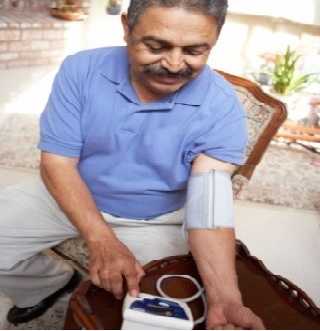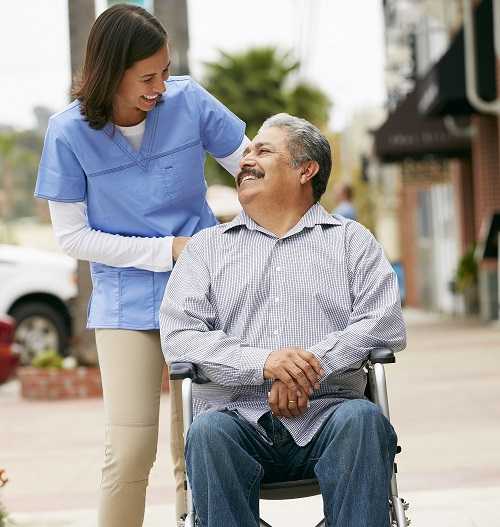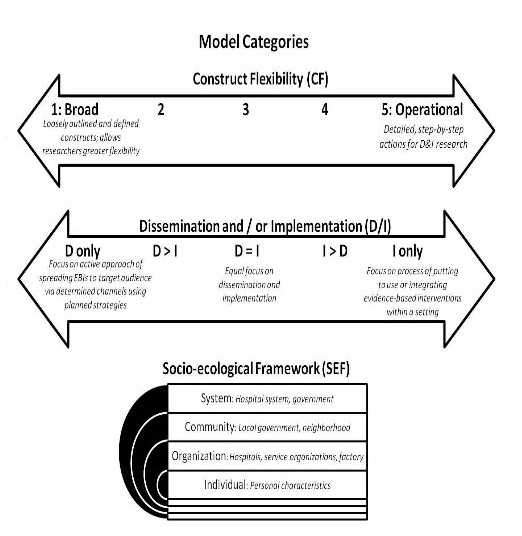Prevention Research Centers
Stories and Highlights of Notable Accomplishments
The PRC program’s grantees conduct research that contributes to improved community and population health. The research includes new models for preventing chronic disease and other public health problems. Stories and highlights of notable accomplishments are reviewed for one or more for the following:
- Changes in policy, systems, or environments.
- Offers scalability and replicability for other populations.
- Expands the evidence base of public health priority areas (including the National Prevention Strategy, Healthy People 2020, CDC Winnable Battles, or the NCCDPHP Domains).
- Impacts the health of the population or community.
- Results in measurable changes in practices or reach.
- Documents behavior, practice or health outcomes in population(s).
- Contributes to health equity or reduces health disparities.
- Engages community in implementation.
- Provides economic evidence for public health decision making.
- Improves scientific knowledge, technical capability, or clinical practice.
Aging
 Program Helps Older Adults Manage Depression
Program Helps Older Adults Manage Depression
University of Washington Health Promotion Research Center
Minor depression affects 15%–20% of community-dwelling older adults and is known to profoundly compromise health and quality of life. People who are socially isolated and in frail health are especially at risk for depression. Doctors and their older patients often incorrectly assume that depression is an unavoidable consequence of aging, and many depressed older adults do not receive treatment.
 Exercise Program for Older Adults Improves Health and Catches on Around the Country
Exercise Program for Older Adults Improves Health and Catches on Around the Country
University of Washington Health Promotion Research Center
The decline in strength, endurance, flexibility, and balance that occurs with aging contributes to diminished independence, diminished vitality, and increased likelihood of disabling injury. After years of research showing that exercise leads to improved physical function and reduced disability in older adults, researchers at the University of Washington’s Health Promotion Research Center addressed the feasibility and effectiveness of offering an exercise program in the setting of a community senior center.
Cancer
 "1-2-3 Pap" Intervention Improves HPV Vaccine Series Completion Among Appalachian Women
"1-2-3 Pap" Intervention Improves HPV Vaccine Series Completion Among Appalachian Women
University of Kentucky Prevention Research Center
Researchers from the University of Kentucky PRC developed and tested a DVD titled “1-2-3 Pap” that encourages Appalachian women to complete the human papillomavirus (HPV) vaccine series. The 3-dose HPV vaccine series is a primary strategy to prevent cervical cancer and should be completed within 6 months. Women viewed the 13-minute video on individual laptops using headphones. The women who watched the DVD were 2.44 times more likely to complete the series than the women who received standard care. This model has the potential to be adapted and repeated in other underserved areas with high rates of cervical cancer.
Read more about the work, published in the January 2013 issue of the Journal of Communication.
 Indoor Tanning Salons Used by College Students
Indoor Tanning Salons Used by College Students
Learn about two Prevention Research Centers’ discovery of indoor tanning use among college students and steps they took to raise awareness.
Community Health Workers
 Preventing Eye Injuries Among Citrus Harvesters: The Community Health Worker Model
Preventing Eye Injuries Among Citrus Harvesters: The Community Health Worker Model
University of South Florida Prevention Research Center
Using a community health worker model, the University of South Florida PRC improved the use of protective eyewear among citrus harvesters. Researchers trained full-time citrus workers to disseminate eye safety information and encourage the wearing of safety glasses among other workers in the citrus groves. Workers who had 1 to 2 years of experience and who received help from a peer worker were significantly more likely to use safety glasses than were other citrus workers. This model may be applicable to injury prevention in similar agricultural settings.
Access an abstract of an article about the research results (through PubMed).
Deaf and Hard of Hearing
 Studying the Health Needs of Deaf Americans
Studying the Health Needs of Deaf Americans
University of Rochester Prevention Research Center
PRC investigators at the University of Rochester PRC and their community partners are adapting standard scientific tools to study the public health needs of the deaf population in Rochester, New York.
Epilepsy
 PRC Online Health Program, WebEase©, on the Leading Edge of Technology
PRC Online Health Program, WebEase©, on the Leading Edge of Technology
Emory University Prevention Research Center
The Emory PRC creates the first-ever evidence-based Internet program for epilepsy self-management, WebEase. The program is now available online from the Epilepsy Foundation website, and a mobile-friendly version of the program is under development.
 A Promising Distance-Delivered Intervention for Depression Among People with Epilepsy
A Promising Distance-Delivered Intervention for Depression Among People with Epilepsy
Emory University Prevention Research Center
Depression is often underdiagnosed and undertreated among people with epilepsy, a brain disorder characterized by repeated and unpredictable seizures. People with epilepsy have many risk factors for depression, including restriction of driving (and therefore limited employability), stigmatization, isolation, dependency on others, and concerns about adding medications to the epilepsy regimen. Research suggests that depression is both biological and cognitive; thus, interventions may include medications for the biologic component and therapy to change patterns of thought. Project UPLIFT combines cognitive-behavioral therapy and mindfulness training to help people with epilepsy and depression manage their symptoms of and reduce depression.
 People with Epilepsy Benefit from PEARLS, a Home-based Depression
People with Epilepsy Benefit from PEARLS, a Home-based Depression
University of Washington Health Promotion Research Center
PEARLS is a home-based intervention for older adults that has been shown to significantly decrease depression and improve functional and emotional well-being. The intervention focuses on problem-solving treatment (PST), a skills-enhancing behavioral approach that addresses problems, such as social isolation and lack of physical activity, that contribute to depression. PEARLS is listed in a National Registry of Evidence-based Programs and Practices (developed by the Substance Abuse and Mental Health Services Administration) and shows potential for widespread impact. Because PEARLS is a home-based program and many people with epilepsy may be homebound because of driving restrictions, unemployment, and limited public transportation, the University of Washington Prevention Research Center tested whether PEARLS would be effective for people with epilepsy and depression, as it had been proven to be for older adults.
 Promising PRC Program May Help Adults Manage Epilepsy
Promising PRC Program May Help Adults Manage Epilepsy
University of Washington Prevention Research Center
Many people with epilepsy, also known as seizure disorder, do not have access to self-management supports to help them manage this condition. The Program for Active Consumer Engagement in Self-Management (PACES) can help them learn the skills they need to manage their epilepsy and its treatment. PACES was developed by researchers at the University of Washington Prevention Research Center as a way to improve self-management and address mental health problems in adults with epilepsy.
HIV Prevention, Sexual Health, and Teen Pregnancy
 Study in Malawi Finds Drug Regimens Effective in Preventing HIV Transmission Through Breast Milk
Study in Malawi Finds Drug Regimens Effective in Preventing HIV Transmission Through Breast Milk
University of North Carolina at Chapel Hill Center for Health Promotion and Disease Prevention
Research conducted through the University of North Carolina at Chapel Hill PRC found that giving antiretroviral drugs to HIV-infected breastfeeding mothers in sub-Saharan Africa or giving an HIV-fighting syrup to their babies are both effective. In part because of these results, the World Health Organization recommended that HIV prevention guidelines for breastfeeding HIV-infected mothers, who were still in the early stages of HIV infection, be modified to offer them a choice of approaches.
A scientific article reporting the research results and published in the New England Journal of Medicine received the 2011 Charles C. Shepard Science Award in the category of prevention and control. This achievement exemplifies what can be achieved through the PRC model—particularly in how it enables CDC researchers to work closely with external researchers.
 Middle School Program May Help Teens Delay Sexual Behavior
Middle School Program May Help Teens Delay Sexual Behavior
University of Texas Prevention Research Center
University of Texas Prevention Research Center (UTPRC) has focused on child and adolescent health since its inception in 1986. Primary community partners include parents and youths, schools, and agencies serving young people. The long-established partnerships provided an excellent foundation for addressing the sensitive issues of teen sexual health. Together, the Houston Independent School District and the UTPRC identified representative middle schools serving low-income students from across the district, ten schools agreed to participate in the UTPRC trial, funded by the National Institute of Mental Health, of a curriculum-based education program called It’s Your Game: Keep it Real (IYG).University of Texas Health Science Center at Houston: University of Texas Prevention Research Center
 The Teen Years Explained: A Guide to Healthy Adolescent Development
The Teen Years Explained: A Guide to Healthy Adolescent Development
John Hopkins University Prevention Research Center
The Teen Years Explained, written by the Johns Hopkins University PRC and released in 2010, describes state-of-the-art knowledge about cognitive development throughout the teen years and how it influences risk assessment, sexual behavior, identity formation, and other dimensions of individual growth. A webinar promoting the book attracted attendees from around the country representing state and local health departments, nonprofit organizations, and federal agencies. The book, intended for public health practitioners, parents, and anyone working with adolescents, is available for purchase online. More than 11,000 copies of the book are already in use. A free downloadable PDF of the book is available on the PRC’s website.
The guide was translated into Spanish. The John Hopkins PRC worked in collaboration with the Department of Health of Puerto Rico. See the Spanish version of the guide here [PDF-16.8 MB].
.
Nutrition, Physical Activity, and Obesity
 Prevention Research Centers Network Publishes a Collection of Nutrition Policy Research Findings
Prevention Research Centers Network Publishes a Collection of Nutrition Policy Research Findings
Public health researchers can provide scientific evidence on nutrition-related polices to help make communities healthier. A thematic network of the CDC Prevention Research Center’s, the Nutrition and Obesity Policy Research and Evaluation Network (NOPREN), published 10 articles in a special collection in Preventing Chronic Disease.
 Body & Soul: Churches Impact Their Members’ Food Choices
Body & Soul: Churches Impact Their Members’ Food Choices
University of North Carolina at Chapel Hill Center for Health Promotion and Disease Prevention
Body & Soul is a program that incorporates healthy lifestyle education, church events, and peer counseling and has been proven to promote healthy food choices among participants. The program was based on the success of two projects that promote healthy nutrition among black church members. One was called black Churches United for Better Health and was developed by researchers from the University of North Carolina PRC. It involved making environmental changes to churches (such as increased availability of fruits and vegetables at events), gaining the support of church leadership, and distributing educational materials encouraging healthy lifestyles. The other program was Eat for Life, which emphasized motivational counseling for participants.
 Training Course Leads to Improved Outdoor Space for Physical Activity
Training Course Leads to Improved Outdoor Space for Physical Activity
University of South Carolina Prevention Research Center
University of South Carolina PRC’s Physical Activity and Public Health Course trains health department professionals and post graduate researchers in exercise science and public health evidence-based practices. The experiential learning focus of the course has allowed course attendees to apply their knowledge and improve the physical activity environment in Bluffton, South Carolina and Park City, Utah, where the course is taught.
 New Orleans Named "Walk Friendly Community"
New Orleans Named "Walk Friendly Community"
Tulane University Prevention Research Center
The Pedestrian and Bicycle Information Center honors New Orleans, Louisiana, with a Bronze-Level Walk Friendly Community designation and notes the contributions of a coalition headed by the Tulane University PRC.
University of Washington Health Promotion Research Center
This 3-minute video, produced in 2011, describes how a physical activity program developed by the University of Washington PRC for older adults is also helping people with arthritis. A promising PRC program helps schools and communities create supportive environments that promote healthy eating and regular physical activity.
 Cultivating Healthy Connections
Cultivating Healthy Connections
University of Minnesota’s Healthy Youth Development Prevention Research Center
When a PRC evaluated a farming and marketing program for neighborhood youth, the researchers found many benefits rooted in community service. The 9 -to 18 -year olds were members of the Youth Farm and Market Project in Minnesota’s Twin Cities, a program that shows young people how to grow nutritious food and in the process, learn about good health and community service. To learn just how much more than fresh vegetables the program yields, Youth Farm turned to researchers at the University of Minnesota’s Healthy Youth Development/Prevention Research Center (PRC) to evaluate the program.
 Addressing Chronic Diseases in the Americas
Addressing Chronic Diseases in the Americas
San Diego Prevention Research Center
St. Louis Prevention Research Center
Two Prevention Research Centers and a Wide Network of Collaborators Search Brazil and Latin America for Solutions
As countries become industrialized, rates of physical inactivity often rise, and so can the risks of chronic illnesses. PRC researchers and their partners are searching for new ways to promote healthy physical activities.
 Changes in YMCA Afterschool Programs Increase Children's Physical Activity and Healthy Food Options
Changes in YMCA Afterschool Programs Increase Children's Physical Activity and Healthy Food Options
Harvard University Prevention Research Center on Nutrition and Physical Activity
Partnering with the YMCA of the USA, the Harvard University PRC developed a curriculum, Food & Fun After School, to increase children's physical activity and healthy food options in after-school programs. The partners established standards for nutrition and physical activity in after-school settings.
View the Food & Fun After School materials. Read a journal article analyzing the price and nutrition of healthy versus less healthy snacks in after-school programs. Read article abstracts describing the program's impact on children's physical activity and healthy food access (through PubMed).
 Community-Based Program on the US-Mexico Border Reduces Chronic Disease Risks
Community-Based Program on the US-Mexico Border Reduces Chronic Disease Risks
University of Arizona Prevention Research Center
Community health workers (CHWs) have been used worldwide to promote health; in Hispanic communities, CHWs (called promotores when referring to both women and men) have been successful in programs to improve access to care and screening. Promotores help tailor and lead a chronic disease prevention program for Mexican-Americans living on the US-Mexico border
 Clinicians in Maine Learn to Address Overweight in Young Patients
Clinicians in Maine Learn to Address Overweight in Young Patients
Harvard University Prevention Research Center on Nutrition and Physical Activity
The Maine Bureau of Health and the Maine Center for Public Health joined with Harvard University’s CDC-sponsored Prevention Research Center to form a new entity named the Maine-Harvard Prevention Research Center (MHPRC). The partners focused attention on the statewide problem of obesity, and in 2004, the MHPRC established the Maine Youth Overweight Collaborative (MYOC) in partnership with the Maine Chapter of the American Academy of Pediatrics. Together they developed an approach to address overweight in children via physicians’ offices. They obtained funding from the Maine Health Access Foundation to launch an intervention to improve care of overweight children and their families by improving providers’ knowledge, attitudes, and practices.
 An Act to Increase Access to Nutrition Information
An Act to Increase Access to Nutrition Information
Harvard University Prevention Research Center on Nutrition and Physical Activity
In 2000, the Maine Bureau of Health and the Maine Center for Public Health joined with Harvard University’s PRC to create a new center focusing on the statewide problem of childhood obesity. Research results led to a statewide ban (2007) on advertising of unhealthy snacks on school property. The Harvard-Maine PRC subsequently sponsored statewide conferences that prompted advocacy on legislation requiring calorie labeling on menus of chain restaurants (20 or more establishments; signed into law June 17, 2009).
Read a summary of the law
 Out of School Nutrition and Physical Activity Initiative
Out of School Nutrition and Physical Activity Initiative
Harvard University Prevention Research Center on Nutrition and Physical Activity
Harvard University PRC researchers found that through the use of the Out of School Nutrition and Physical Activity Initiative (OSNAP), after-school programs can increase children’s access to drinking water during snack time. The PRC developed OSNAP to help programs that care for children outside of school improve nutrition and physical activity environments, policies, and practices. Ten programs participating in OSNAP took part in learning sessions focused on changing policies and environments to increase healthy eating, drinking, and physical activity opportunities. The researchers helped the programs set up standard operating procedures for water delivery, such as provision of cups to children at snack time, to increase the likelihood that changes would be maintained at the end of the study. Compared to 10 control programs, at 6-month follow-up the intervention sites served 3.6 more ounces of water on average per child per day, served water more frequently, and served 60.9 fewer beverage calories on average per snack per day. The researchers believe this study is the first group randomized control trial (RCT) of an intervention to increase the amount of water served in after-school programs. The changes made to the after-school snack menus of participating Boston Public Schools (BPS) are being adopted and implemented throughout the BPS system.
Read an abstract of an article describing the RCT, and visit the OSNAP website.
 Elementary School Program Improves Children's Physical Activity and Diet
Elementary School Program Improves Children's Physical Activity and Diet
University of Texas Prevention Research Center
The University of Texas Health Science Center at Houston PRC was part of the research team that created CATCH—the Coordinated Approach to Child Health. This elementary school program is proven effective in producing diet and physical activity improvements that persist into early adolescence. Staff associated with the PRC’s CATCH Program educated policymakers in Texas about the potential of school health programs to influence children’s physical activity and nutrition. The efforts resulted in the development and passage of Senate Bill 19 in 2001 mandating that all elementary schools have a coordinated school health program by 2007. CATCH has been adopted by more than 1,500 schools in Texas and in schools in 7 other states.
Read the case study about CATCH.
 Bike Lane Infrastructure Improves Ridership in New Orleans
Bike Lane Infrastructure Improves Ridership in New Orleans
Tulane University Prevention Research Center
Tulane University PRC researchers assessed the promising built environment strategy of creating bicycle lanes to increase physical activity in New Orleans. The city installed its very first on-street bicycle lanes in the spring of 2008, and gave the researchers the unique opportunity to observe and evaluate the before and after effects of this new infrastructure on bicycle ridership.
Read journal article abstracts of the first study and the follow-up study (through PubMed).
 PRC Provides Recommendations for a Louisiana Healthy Food Retail Financing Program
PRC Provides Recommendations for a Louisiana Healthy Food Retail Financing Program
Tulane University Prevention Research Center
The Tulane University PRC is a member of and provided technical assistance and data analysis to the Healthy Food Retail Study Group, established by the Louisiana Senate in 2008. The center coordinated the study group and prepared the report that made recommendations for a Louisiana Healthy Food Retail Financing Program, enacted in 2009. The law provides grants and loans to supermarkets, farmers’ markets, and food retailers to make fresh fruits and vegetables available in low-income communities.
Read the policy brief, Healthy Food Retail Act [PDF-437 KB], developed by the PRC.
Read the study group’s report [PDF-597KB].
 Walking and Walkability Increases in Rural Communities
Walking and Walkability Increases in Rural Communities
University of New Mexico Prevention Research Center
University of South Carolina Prevention Research Center
Two PRC programs conducted research and developed strategies that led to more people walking in their rural areas and improved places for walking. The University of New Mexico PRC and Step into Cuba created Village Interventions and Venues for Activity (VIVA) in Cuba, New Mexico, to increase physical activity. The University of South Carolina (Columbia) PRC and a local coalition created Sumter County on The Move! to increase walking in Sumter County, South Carolina.
 New Orleans Supermarkets: 10 Years after Katrina
New Orleans Supermarkets: 10 Years after Katrina
Tulane University Prevention Research Center
Prior to Hurricane Katrina, many African-American neighborhoods were unable to get healthy foods. Fewer supermarkets were located in African-American neighborhoods than in other neighborhoods and this became even worse after the storm.
To determine whether this problem still existed, researchers continued their study of supermarkets in post-Katrina New Orleans.
 Mall Walking: A Program Resource Guide
Mall Walking: A Program Resource Guide
University of Washington Health Promotion Research Center
Walking is a great way to increase physical activity. It requires no special skills, costly equipment, or special clothing beyond comfortable walking shoes. Sometimes it is hard to find a safe place to walk, however, preventing a person from being physically active. For example, many neighborhoods lack sidewalks, have busy traffic, and sometimes are unsafe (e.g., crime, poor lighting, uneven surfaces). Weather can also play a role in someone’s decision to walk or not. But walking inside a shopping mall can solve many of these problems.
Mall walking offers a safe, free, comfortable, walker-friendly way for the public to be more physically active. A guide to establishing and improving mall walking programs was developed by the University of Washington’s Health Promotion Research Center (HPRC) and CDC.
Other
St. Louis University and Washington University in St. Louis PRC
Researchers from the St. Louis University and Washington University in St. Louis PRC created an inventory of 61 Dissemination and Implementation (D&I) models and organized them according to 3 categories for use by D&I researchers. These models help to bridge the gap between research and practice by providing the structure that can be used to spread evidence-based approaches that prevent disease, promote health, and improve health services.
 University of South Florida Biannual Social Marketing Conference
University of South Florida Biannual Social Marketing Conference
University of South Florida Prevention Research Center
Faculty and students from the Florida Prevention Research Center (PRC) at the University of South Florida (USF) have coordinated a biannual Social Marketing Conference and the Social Marketing Training Academy for the past 24 years. This past June, there were 200 attendees with ten different countries and territories represented at the event, including scholarships awarded for attendees from Brazil and Nigeria.
Highlights of the conference are at here.
Tobacco
 Smoking Cessation Program for 14-to 19- Year Olds Selected as a Model Program
Smoking Cessation Program for 14-to 19- Year Olds Selected as a Model Program
West Virginia University: Prevention Research Center
The West Virginia PRC a partnered with the West Virginia state health and education departments, the Coalition for a Tobacco-Free West Virginia, and the American Lung Association (ALA), to develop a plan to reduce teen smoking. Together, the group developed an initial version of Not On Tobacco (NOT), an innovative quit-smoking program specific to teenagers
 Internet Cigarette Vendors Study Prompts Policy Changes
Internet Cigarette Vendors Study Prompts Policy Changes
University of North Carolina at Chapel Hill: Center for Health Promotion and Disease Prevention
Because smokers almost always start smoking during adolescence, public health officials emphasize preventing young people from becoming addicted to tobacco. Two strategies used to prevent youth tobacco use are limiting the commercial availability of tobacco products and increasing the cost of these products by levying excise taxes. Research results from the University of North Carolina PRC brought attention to this problem and led to support for state and federal legislation to prevent online tobacco sales to minors and to collect all taxes from Internet cigarette vendors before delivery of their product.
 Program, Policy, and Price Interventions for Tobacco Control
Program, Policy, and Price Interventions for Tobacco Control
Researchers from the University of Washington PRC and their partners at health departments in Washington State and Oregon assessed health care costs and smoking rates associated with three tobacco-control strategies for the state of Washington:
- A comprehensive tobacco prevention and control program in Washington State (2000-2011).
- Washington’s statewide ban on smoking in public places (Initiative 901), in force since late 2005.
- Washington’s multiple increases in cigarette taxes, which added $1.20 to the per-pack price from 2000 to 2008.
The combined program, policy, and price interventions led to less people smoking and fewer related health effects, while saving money. Since the completion of the study, there has been an additional $1.00 increase in cigarette pricing per pack. During the 2012 legislative session, available funding was directed to restore a portion of the comprehensive program for 1 year.
 Smoking Cessation for Pregnancy and Beyond
Smoking Cessation for Pregnancy and Beyond
Dartmouth College Prevention Research Center
The Dartmouth College PRC, working with CDC’s Division of Reproductive Health and the American College of Obstetrics and Gynecology (ACOG), released Smoking Cessation for Pregnancy and Beyond—an interactive web-based training for health care professionals, including physicians, physician assistants, nurses, nurse practitioners, certified health educators, pharmacists, and students of the health professions. After completing the training, health care providers should be able to apply best practice approaches for smoking cessation among women who are pregnant or in their child-bearing years. The approaches reflect current clinical recommendations from the US Public Health Service and ACOG. The training is accredited for up to 4 hours of continuing education credits. The ACOG and other professional organizations are promoting the training among their constituents. Visit the Smoking Cessation for Pregnancy and Beyond website.
- Page last reviewed: September 28, 2016
- Page last updated: September 28, 2016
- Content source:


 ShareCompartir
ShareCompartir

